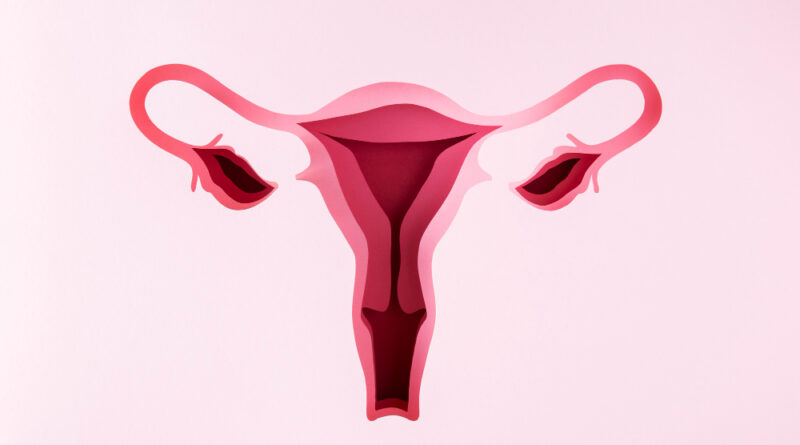Can cervical stenosis cause infertility?
Getting pregnant after having a narrow cervix
Cervical stenosis is a rare, but possible, cause of infertility in women. When you have cervical stenosis, the opening in your neck is smaller than it should be, and in severe cases, it may even close completely. This can make it hard for the sperm to reach the egg and make insemination or in vitro fertilisation harder to do. (IVF).
You will be interested on: Treating Cervical Conditions and Infertility in Ayurveda
About your cervix
To understand how cervical stenosis can make you unable to have children, you need to know how the cervix works. Your cervix is the opening between your vagina and your uterus. The external os, or cervical aperture, is at the end of the vaginal canal.
For a pap smear, cells are taken from this area. This section of your cervix is close enough to touch. In fact, some women keep track of changes in their cervix to find out when they ovulate.
Keep reading : Sexologist in Bangalore
But this is merely the part of the cervix that is on the outside. The cervical canal goes past the external os, making a sort of tunnel from the vagina to the uterus. The endocervical canal is the name for the cervix’s “tunnel“. The internal os, or internal aperture of the cervix, is at the end of the endocervical canal. Here, your cervix stops and your uterus starts.
Cervical stenosis can happen in any of these places, or it can happen in all of them at the same time. Most of the time, though, the problem is on the outside of the os. The cervix is an important part of getting pregnant.
- Endometrial tissue leaves the uterus through the cervix when a woman has her period.
- It’s how sperm get from the vagina to the rest of the reproductive system.
- It has cells that make mucus. Cervical mucus helps sperm migrate up into the cervix during ovulation. It also helps prevent infections and keep away harmful germs.
- The cervix makes a mucus plug to protect the foetus when the woman is pregnant. It stays tightly shut and acts as a seal until the baby is born.
Keep reading: Female Infertility Treatment in Banjara Hills
How Cervical Stenosis Impacts Fertility
Cervical stenosis can have a direct or indirect effect on fertility.
- Sperm passage blocked or limited: Sperm can’t get to the fallopian tubes if the aperture in the cervix is obstructed or smaller than it should be. (where they meet and fertilise the egg).
- Uterine inflammation and endometriosis risk: In severe circumstances, the flow of menstrual blood can be completely stopped or slowed down such that it can’t come out readily. This can make the uterus fill up with blood, which can hurt and make the area inflamed. It’s called a hematometra.
- If there is an infection, the uterus can fill with pus. This is called a pyometra in medicine. Even if the cervix is slightly open and blood can flow out, menstrual blood can sometimes flow back up through the fallopian tubes. This can cause endometrial lesions and endometriosis.
- Less fertile cervical mucus: Most of the time, scar tissue is to blame for cervical stenosis. Scar tissue can make it hard for the cervix to make mucus. Sometimes, the procedure that generated the scar tissue also removed tissue from the cervix, which makes it even harder for the cervix to make mucus. Sperm could have problems travelling and staying alive if there isn’t enough mucus in the cervix.
- Complications during fertility treatment: For both IUI and IVF, a catheter must be inserted into the cervix. In IUI, a catheter moves sperm that has been cleaned in a specific way. In IVF, the embryos are in the catheter.
You will be interested on: Female Infertility Treatment in Manikonda
In either situation, treatment can get harder if the cervical hole is closed or too small for the catheter to fit through. You can’t (and shouldn’t) force the catheter through. There are, however, different ways to make a trail.
Treatment for cervical stenosis may also harm the cervix or make it weaker. Later, when the woman is pregnant, this can lead to a condition called “incompetent cervix.”
An incompetent cervix occurs when the cervix is not closed or robust enough to keep the pregnancy safe.
It could cause a miscarriage in the second trimester or an early birth. There are, however, ways to lessen this danger.
Keep reading: Female Infertility Treatment in Hyderabad
What Causes Cervical Stenosis?
Cervical stenosis is most often caused by previous surgery on the cervix in the past.If an abnormal cell is found during a pap smear, your doctor may need to take a small piece of tissue from your cervix. This can be done with either a cone biopsy or a loop electrocautery excision (commonly known as LEEP).
You will be Interested on : Sexologist in Guwahati
Scar tissue can form over the cervical opening as your body heals after the biopsy. This can lead to cervical stenosis. Other things that could cause cervical stenosis are:
- Asherman’s syndrome
- Cervical dysplasia (precancerous cells)
- Cervical or endometrial cancer
- Congenital (born with a closed or narrow cervix)
- Endometrial ablation surgery (treatment done to reduce heavy periods; not recommended for those who plan to have children in the future)
- Infection of the uterus or cervix
- Menopause
- Radiation therapy to the cervical area
You will be interested on: Female Infertility Treatment in Bangalore
Diagnosis and Symptoms
Depending on how bad it is, cervical stenosis may be found when looking into symptoms or not until fertility tests or treatment. Symptoms could include unusual menstrual bleeding, very painful cramps, not having a period, or only having very mild spotting.
If these symptoms happen again after surgery on the neck, cervical stenosis is a strong possibility.
Cervical stenosis might also make it hard to get pregnant. During a test for fertility, cervical stenosis may be suspected if an HSG is hard to do.
An HSG is a specific kind of x-ray in which a dye is put into the female reproductive system through the cervix. Most of the time, a catheter is put in the cervix’s external os. The doctor lets out a dye and then takes x-rays. The x-rays should indicate if the fallopian tubes are open and what the uterine cavity looks like.
Keep reading : Sexologist in Hyderabad
But cervical stenosis may be a problem if the catheter can’t be put in, it hurts a lot, or the dye doesn’t get through the cervix. Usually, a hysteroscopy is the next step if this happens. This test for fertility can also be used to fix cervical stenosis if it is a problem.
Cervical stenosis can also be found during the process of trying to get pregnant. (If you’re wondering how it might have been missed during testing, it’s because cervical stenosis can come back after therapy, even if it was fixed.) Cervical stenosis could make it hard to place the catheter for insemination or embryo transfer during IUI or IVF.
Keep reading: Ayurvedic Treatment for Female Infertility
Get ayurvedic treatment for female infertility at Khokar Clinic.
To get a free consultation Call or Whatsapp +91 9995202100
Fill up online consultation form https://www.khokardispensary.com/quick-online-consultation/
Originally posted 2023-04-14 06:40:36.





